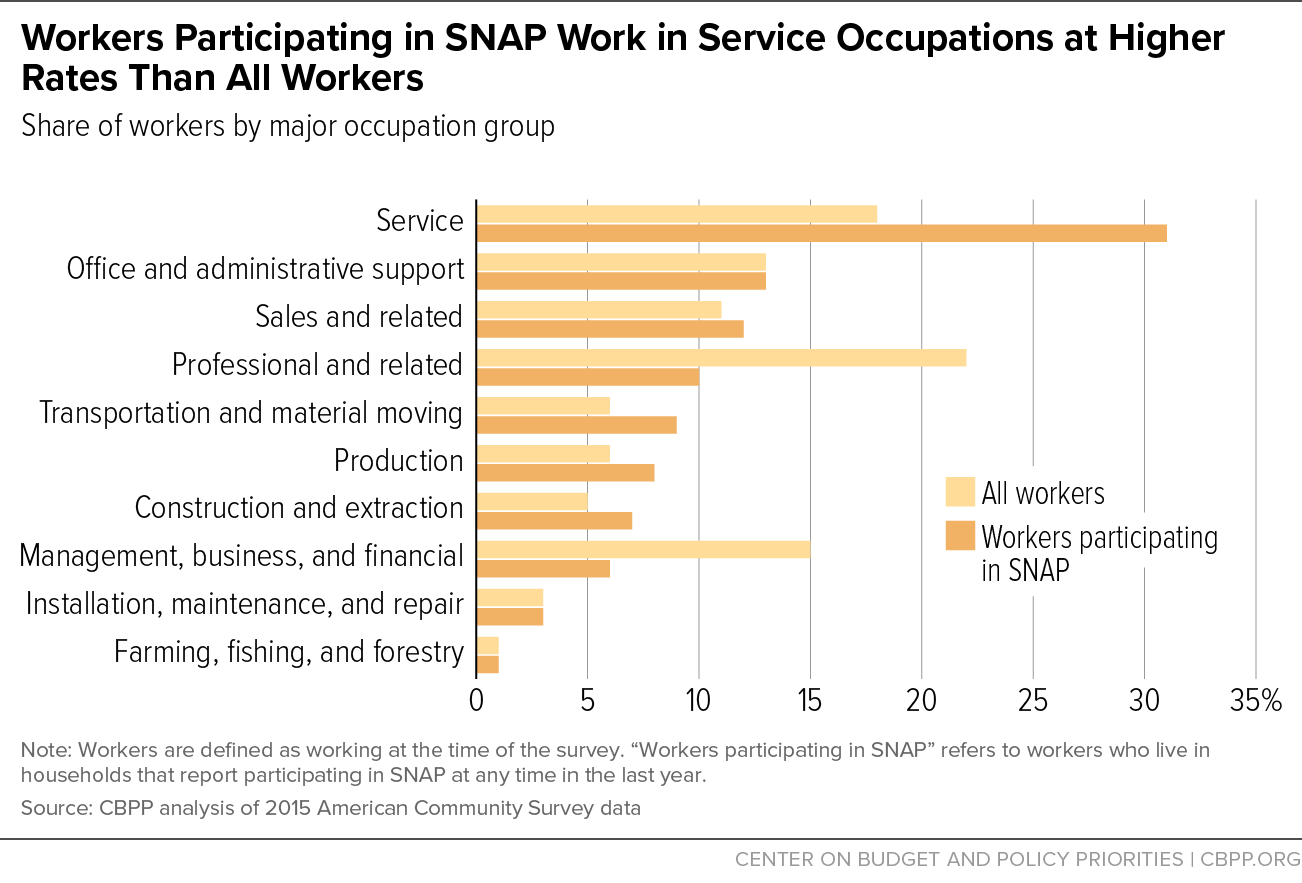BEYOND THE NUMBERS
For millions of Americans, work doesn’t provide enough income for them to feed their families. Our major new report explains that SNAP (formerly food stamps) provides workers with low pay and often fluctuating incomes with crucial additional monthly income to help put food on the table. It also helps workers get by while they’re between jobs.
Up to 30 percent of Americans earn pay that would barely lift a family above the poverty line for full-time, year-round work. And, in many cases, workers who want a full-time job can only get part-time work or have irregular schedules that can change from week to week, with little advance notice or worker input.
Also, low-wage jobs tend to lack crucial supports such as paid sick leave, which can cost workers their jobs when they get sick or must care for an ill family member. In addition, low-wage workers are less likely than other workers to qualify for unemployment insurance.
SNAP benefits support work. The benefit formula phases out benefits slowly as earnings rise and includes a 20 percent deduction for earned income to reflect work-related expenses. As a result, SNAP benefits fall by only 24 to 36 cents for each additional $1 of earnings for most households. SNAP benefits can help smooth out volatile income and provide much-needed food assistance when workers’ hours are cut or they lose their jobs.
SNAP participants work in a wide range of jobs but, compared to all workers, a greater share of them are in service occupations (see graph) and industries such as retail and hospitality — jobs likelier to have low wages and other disadvantages. In some occupations, such as dishwashers, food preparation workers, and nursing, psychiatric, and home health aides, at least one-quarter of workers participate in SNAP. For them and millions of others whose jobs don’t provide enough or steady income to provide for their families, SNAP provides essential support.

